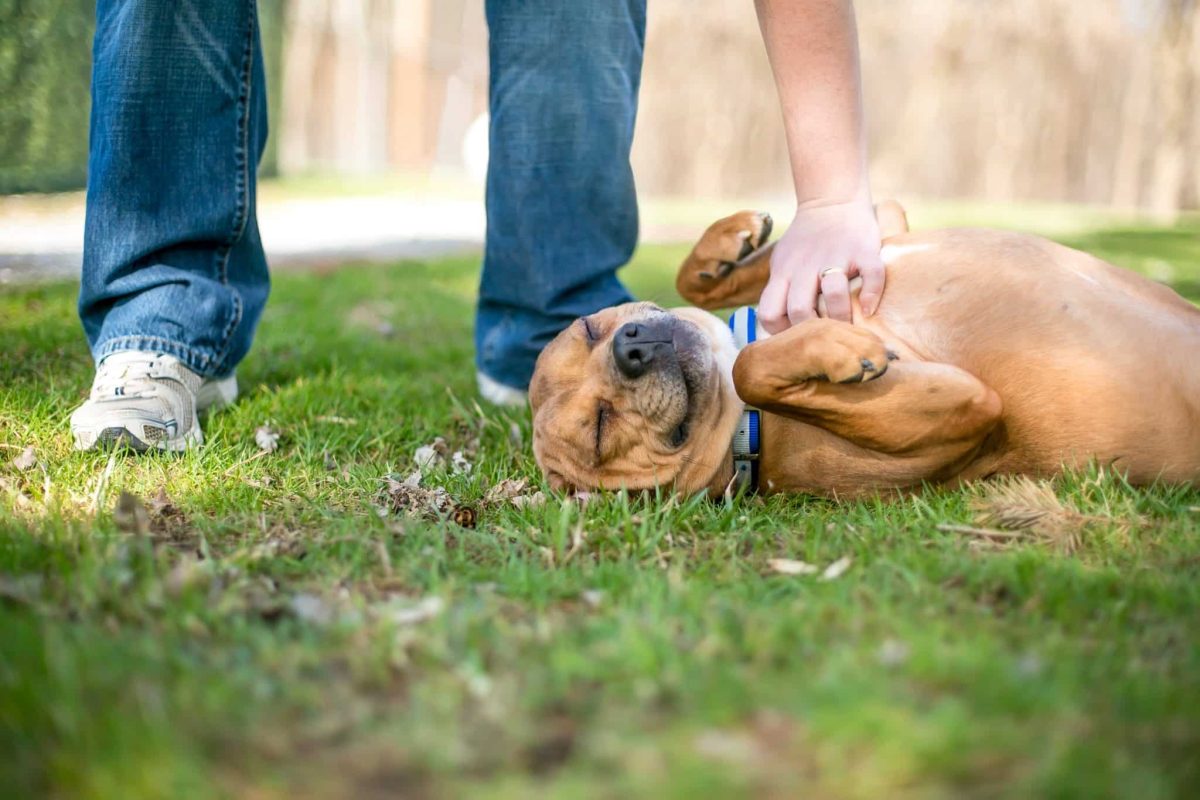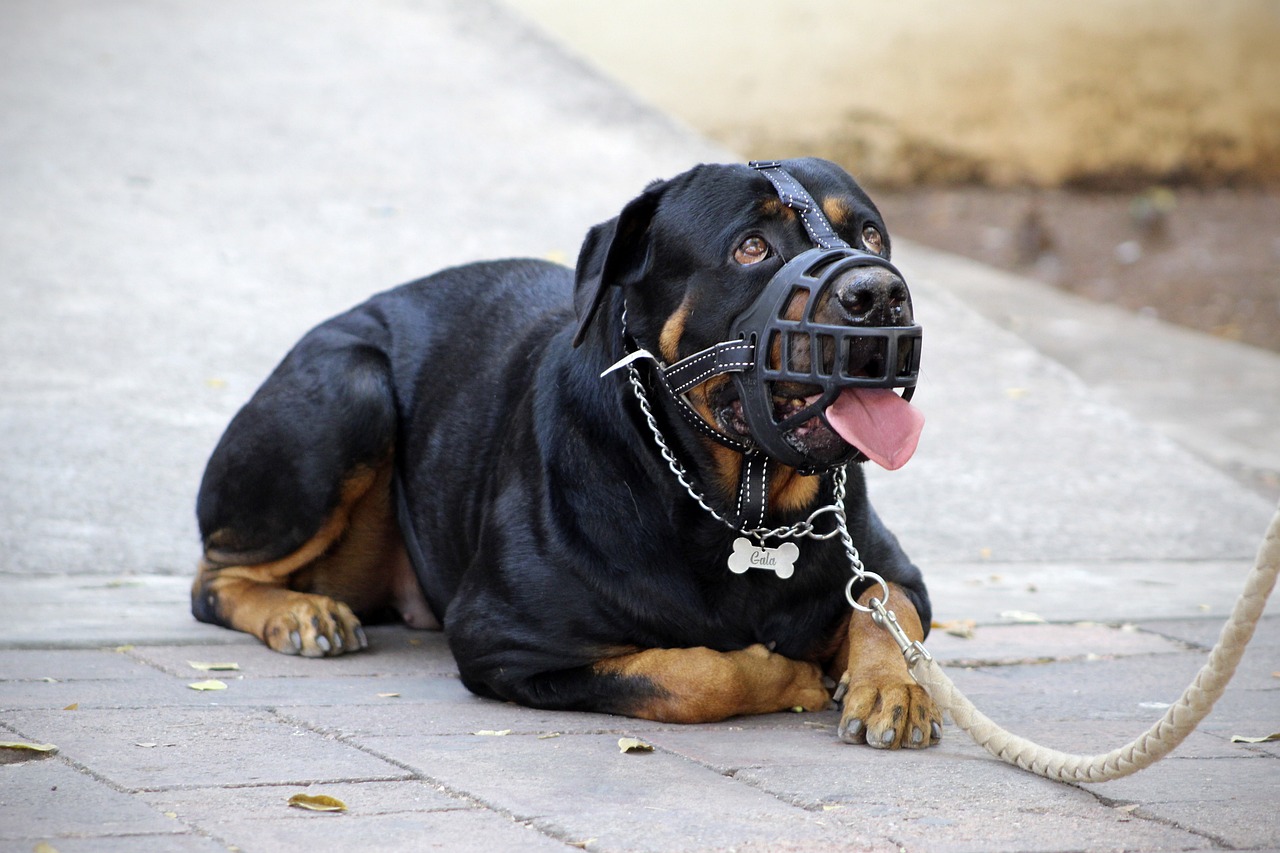 Shutterstock
Shutterstock
Living with an anxious dog can feel a little like living with a tiny, furry storm cloud—one minute they’re fine, the next they’re trembling, pacing, or trying to crawl under the couch to escape an invisible monster. Whether it’s loud noises, new environments, separation anxiety, or mysterious phantoms only they can detect, an anxious dog needs help finding their calm. The good news is that there are many ways to help ease their stress and create a more peaceful life for both of you.
Create a Safe Space
 Shutterstock
Shutterstock
Just like humans need a cozy spot to decompress, dogs benefit from having a dedicated safe space. This could be a crate filled with soft bedding, a quiet corner with their favorite toys, or even your closet (some dogs love it). A safe space gives them a retreat where they can feel secure when things get overwhelming. Make it as inviting as possible, and avoid using it for punishment—this is their zen zone, not a doggy timeout. Sometimes, all a nervous pup needs is a reliable place to hide and recharge.
Use Calming Music
 Shutterstock
Shutterstock
Believe it or not, dogs can respond positively to music designed to calm their nerves. Studies show that certain types of classical music or specially composed dog relaxation playlists can lower their heart rates and reduce stress. Pop on a soothing playlist during thunderstorms, fireworks, or stressful car rides to create a calmer environment. You may even find yourself feeling more relaxed, too, which is a bonus when you realize you’ve been humming along to “Bach for Barkers” for 20 minutes straight.
Keep a Consistent Routine
 Shutterstock
Shutterstock
Dogs thrive on predictability. Feeding times, walks, playtime, and even your comings and goings should follow a regular schedule as much as possible. An inconsistent routine can add to a dog’s anxiety because they don’t know what’s coming next. A steady, predictable life gives your anxious pup a sense of control in a world that sometimes feels too chaotic. Plus, you’ll have fewer wide-eyed “WHERE WERE YOU” guilt trips when you stick to the expected plan.
Use Positive Reinforcement Training
 Shutterstock
Shutterstock
Training builds confidence, and confident dogs are usually less anxious. Use positive reinforcement techniques—rewarding desired behaviors with treats, praise, and play—to help your dog feel successful and secure. Teaching simple commands like “sit,” “stay,” or “place” gives them tasks to focus on and strengthens your bond. Every time they succeed, their anxiety chip shrinks a little. Plus, it gives you an excuse to spoil them with treats without feeling like you’re just bribing your way to their heart.
Offer Plenty of Physical Exercise
 Shutterstock
Shutterstock
A tired dog is a calmer dog. Regular exercise helps burn off nervous energy and produces feel-good chemicals like endorphins, just like it does for humans. Tailor the activity level to your dog’s breed, age, and ability—long walks, games of fetch, or a good romp in the backyard can make a world of difference. Just don’t expect miracles if your idea of a “walk” is three steps to the mailbox and back. Get those paws moving!
Try Mental Stimulation Games
 Shutterstock
Shutterstock
Mental workouts are just as important as physical ones for anxious dogs. Puzzle toys, treat-dispensing games, and scent work activities challenge their brains and give them a sense of accomplishment. Mental stimulation can tire out a dog faster than a long walk sometimes, and it’s a fantastic distraction from whatever has them worried. If you ever wanted to feel like your living room was an adorable canine version of an escape room, now’s your chance.
Provide Calming Supplements
 Shutterstock
Shutterstock
Natural calming supplements like CBD oil, melatonin, or specially formulated treats can help take the edge off your dog’s anxiety. Always check with your veterinarian before introducing supplements to make sure they’re safe for your specific dog. For many dogs, these gentle aids can make stressful events like thunderstorms or travel much more manageable. Think of it as slipping them a little zen—served up in tasty treat form, of course.
Avoid Overexposure to Triggers
 Shutterstock
Shutterstock
While gradual desensitization to anxiety triggers is a helpful long-term strategy, overwhelming your dog with too much too soon can make things worse. If loud noises, crowded parks, or certain visitors stress your dog out, it’s okay to manage their environment and give them a break. Let your dog decide when they’re ready for new challenges. Sometimes protecting their peace means letting them skip the raucous family BBQ in favor of a solo nap session.
Use Gentle Massage Techniques
 Shutterstock
Shutterstock
A gentle massage can do wonders for calming an anxious dog. Focus on slow, circular motions along their shoulders, back, and chest to help release tension and promote relaxation. There are even pet massage therapists if you want to get fancy about it, but a few minutes of mindful touch from you can make a huge difference. Bonus: you get a calm dog, and they get a spa day without the weird cucumbers on their eyes.
Stay Calm Yourself
 Shutterstock
Shutterstock
Dogs are emotional sponges—they pick up on your vibes faster than you can say “zen garden.” If you’re tense, anxious, or frustrated, your dog will mirror that energy. Staying calm, patient, and composed around your anxious pup reassures them that everything is okay. You are their leader, their guide, and their emotional barometer. So take a deep breath, put on your best soothing voice, and channel your inner yoga instructor—even if inside, you’re screaming into a pillow.
Offer High-Value Chew Toys
 Shutterstock
Shutterstock
Chewing is a natural stress-reliever for dogs, helping them release pent-up energy and soothe themselves. Providing a special chew toy or treat during anxious moments gives your dog a healthy outlet for their nerves. Long-lasting options like stuffed Kongs, bully sticks, or durable rubber chews work well. It’s the canine equivalent of handing someone a stress ball—only much, much tastier (at least to them).
The Official Motto of Anxious Dogs: “Keep Calm and Find Snacks”
 Shutterstock
Shutterstock
Helping an anxious dog isn’t about snapping your fingers and expecting instant peace—it’s about building trust, offering patience, and sometimes bribing them with a handful of treats. With the proper techniques, a lot of love, and maybe a doggie-sized playlist of spa music, you can turn nervous pacing into content tail wags. Remember: behind every anxious dog is a heart that needs a little extra help finding its happy place—and you’re just the person to lead them there (preferably with snacks).

 1 month ago
11
1 month ago
11


















 English (US) ·
English (US) ·